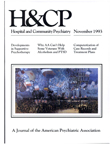A Review of Supportive Psychotherapy, 1986-1992
Abstract
In 1986 a review of literature on individual supportive therapy concluded that although many clinicians had a low regard for this treatment approach, it should be taken more seriously. In this paper the author reviews the literature on supportive therapy from 1986 to 1992 to determine whether it has received increased attention. Methods: MEDLINE and PsycINFO data bases were used. Studies were chosen based on their relevance to supportive psychotherapy and quality of scholarship. Results and conclusions: The quantity and quality of writing reflect heightened interest in supportive psychotherapy during the past six years. It is now securely ensconced in psychodynamic theory, and many clinicians have agreed on strategies and techniques. They include strengthening the therapeutic alliance, environmental interventions, education, advice and suggestion, encouragement and praise, limit setting and prohibitions, undermining maladaptive defenses while strengthening adaptive defenses, and emphasis on strengths and talents. Training programs have not kept pace with advances in knowledge and techniques. Further study of the use of supportive therapy with patients in specific diagnostic groups is recommended, as is more attention to this approach in clinical training and supervision.
Access content
To read the fulltext, please use one of the options below to sign in or purchase access.- Personal login
- Institutional Login
- Sign in via OpenAthens
- Register for access
-
Please login/register if you wish to pair your device and check access availability.
Not a subscriber?
PsychiatryOnline subscription options offer access to the DSM-5 library, books, journals, CME, and patient resources. This all-in-one virtual library provides psychiatrists and mental health professionals with key resources for diagnosis, treatment, research, and professional development.
Need more help? PsychiatryOnline Customer Service may be reached by emailing [email protected] or by calling 800-368-5777 (in the U.S.) or 703-907-7322 (outside the U.S.).



